Codebreakers and Codemakers: The Women Who Programmed Our World
Pioneers of the digital frontier: A countdown of 10 must-know visionaries in computing
Hi there! A few weeks ago, I told you I’d experiment with shorter articles. Now, that didn’t work well. I just love writing these long pieces full of value!
That said, there will be some minor changes in the future, so stay tuned for the announcement.
Do you know how many women are there in the tech industry?
Women comprise about 28% of the tech workforce, improving from 9% in the early 2000s.
In the U.S., women represent only 23% of the labour force in tech positions.
In Europe, women hold approximately 19.1% of ICT (information and communication technology) positions.
According to Eurostat data from 2019, 28.1% of the people employed in the ICT sector in Bulgaria (my country) were women.
As a father of three daughters, I want them to grow up in a world that celebrates their contributions.
So, let's shine a light on the women who've been the backbone of computing, yet their stories often go untold. Today, I am sharing 10 stories from some of my favourite women in the history of computing.
Ready to be inspired?
Read time: 8 minutes
Picks Of The Week
Ada Lovelace
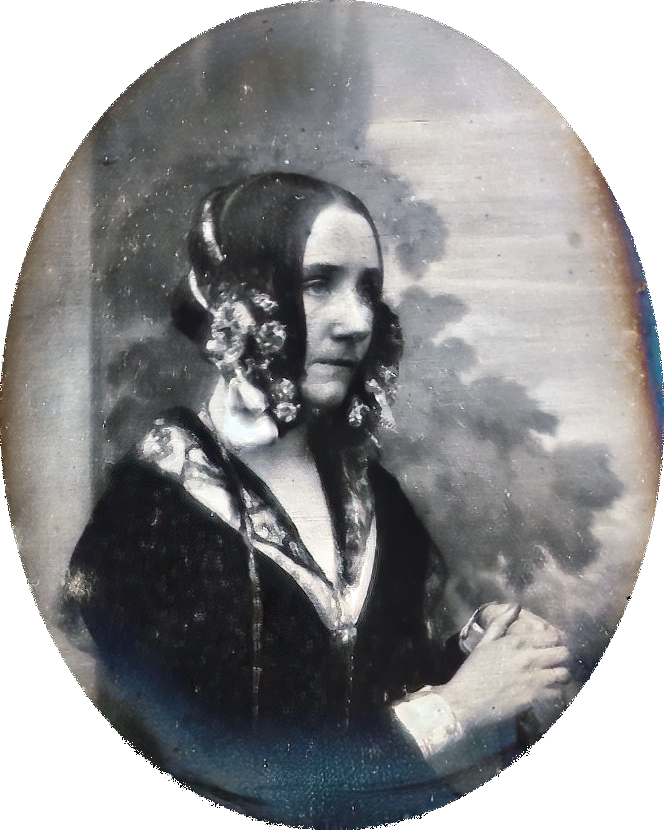
Ada Lovelace, the O.G. computer programmer, was born in 1815. She teamed up with Charles Babbage on the Analytical Engine. Ada earned the nickname “The Enchantress of Numbers” because of her exceptional math skills.
Forget this world and all its troubles and if possible its multitudinous Charlatans—every thing in short but the Enchantress of Number.
— Charles Babbage
Ada's visionary insights predicted the computer's potential beyond mere calculation. She foresaw its ability to create music and art, making her a true prophet of the computer age.
She was ahead of her time!
Grace Hopper
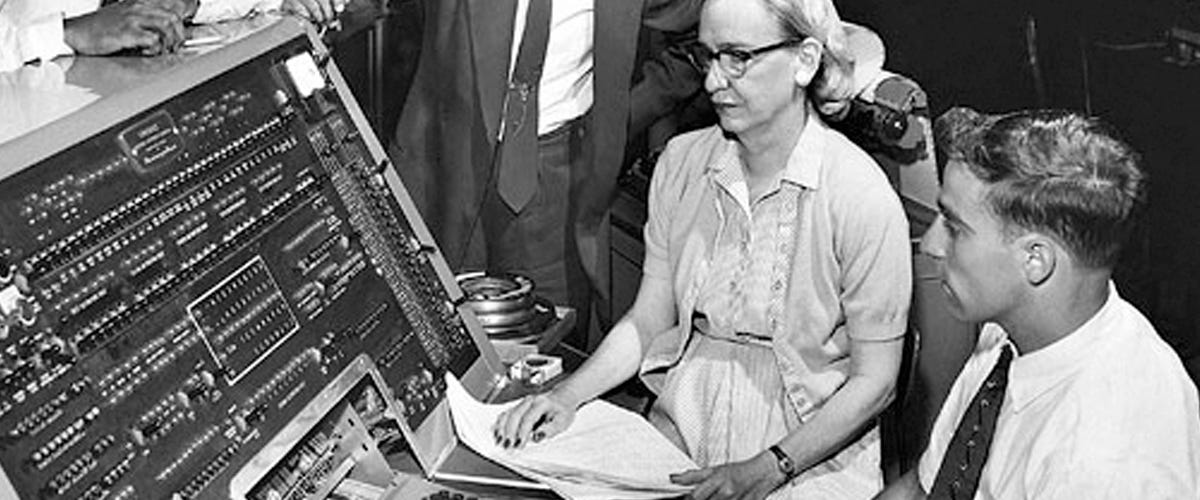
Next up, Grace Hopper. This trailblazer didn't just follow the rules; she rewrote them.
Born in 1906, Grace developed the first compiler. This is a big deal—it's like teaching computers to understand our language. This was a critical step in the evolution of computer programming languages.
And COBOL?
Amazing Grace Hopper helped standardise computer languages with her work, making her a key figure in the field. The fact that some critical still run on COBOL is a testament to the stability and significance of Hopper's work.
Fun fact: Grace Hopper retired 3 times!
Hopper retired from the U.S. Navy in 1966 due to age restrictions, having reached the rank of Commander. However, the Navy recalled her to active duty in 1967 to help standardise its computer languages and programs.
Hopper attempted to retire again in 1971, but the army recalled her to active duty once more.
Finally, she retired for the last time in 1986, at the age of 79, as a Rear Admiral, making her the oldest serving officer in the U.S. Armed Forces.
How amazing is she?
Hedy Lamarr
Born in 1914, Hedy Lamarr was not just a silver-screen star. She was also an inventor whose ideas led to the development of Wi-Fi and Bluetooth. Can you imagine life without them?
Hedy's frequency-hopping spread spectrum technology was a game-changer during World War II. It's still changing our world today! Lamarr used her piano skills to create a mechanism which synchronised the changes between 88 frequencies.
Aside from cinema (you should check her work) and anti-jamming, Hedy Lamarr invented an upgraded stoplight and a tablet that dissolved in water to make a soda similar to Coke.
Here’s something wild: Hedy Lamarr did not even have a formal education. She learned and worked in her spare time between takes!
Katherine Johnson
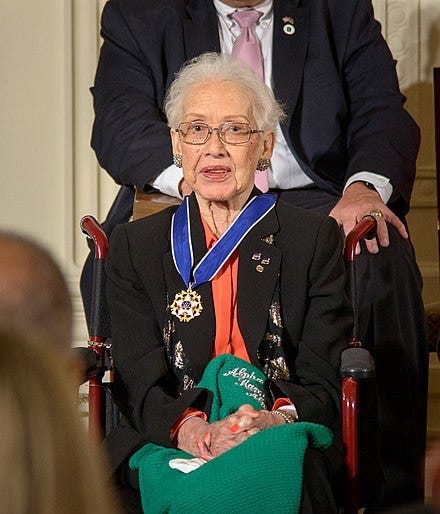
This is Katherine Johnson. She was born back in 1918.
Katherine Johnson was the brain behind the brawn at NASA. Johnson's math skills were crucial in guiding astronauts to space and back. She was essentially the human GPS for the first American to orbit Earth and the Apollo moon crew.
Katherine’s calculations were a giant leap for womankind, especially as an African American woman in the '60s. Thanks to her, we've got footprints on the moon and a new perspective on our planet.
Katherine's story is more than just numbers. It's about not letting anything or anyone hold you back. Her life, celebrated in "Hidden Figures”, is a powerful reminder: with talent and tenacity, you can shoot for the moon, even when the odds are against you.
Frances E. Allen
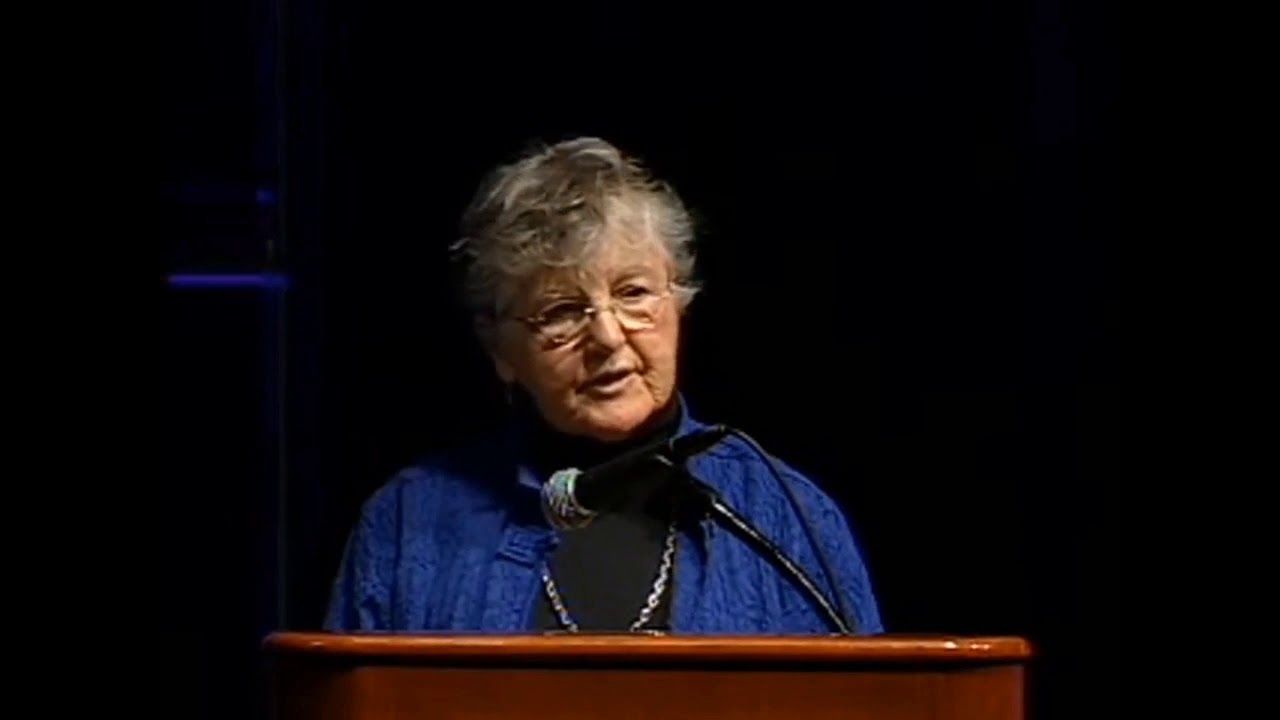
Born in 1932, Frances E. Allen spent her 45-year career at IBM. There, she pioneered compiler optimisation and parallel computing. Her work made computers faster and more efficient.
And guess what? She was the first woman to snag the Turing Award in 2006!
Here’s an excerpt on her Turing award:
Fran Allen's work has had an enormous impact on compiler research and practice. Both alone and in joint work with John Cocke, she introduced many of the abstractions, algorithms, and implementations that laid the groundwork for automatic program optimisation technology.
Annie Easley
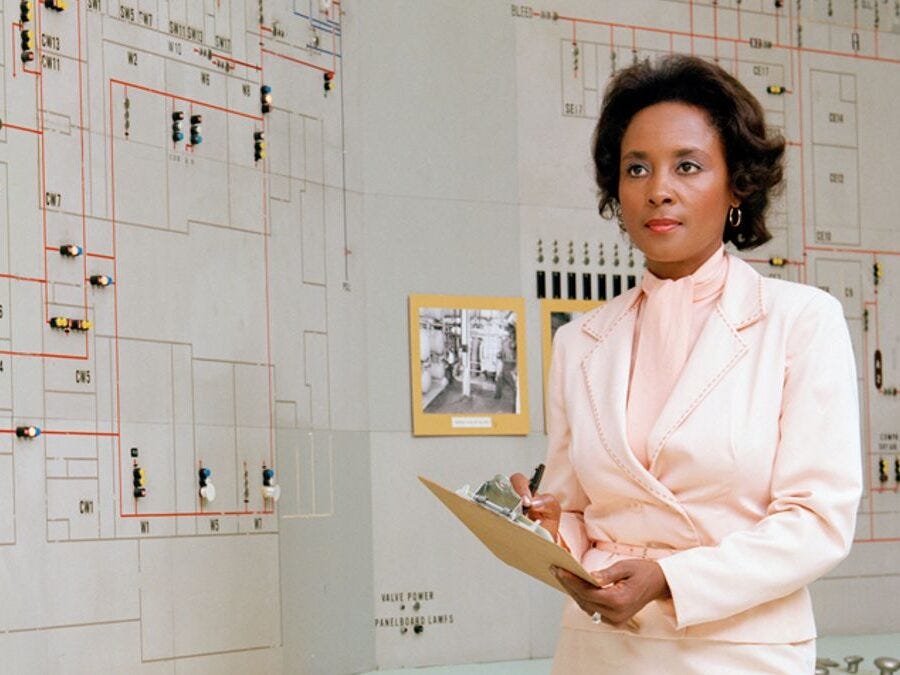
Annie Easley, born in 1933, was an African American mathematician who made her mark at NASA. She went from a computer doing calculations by hand (get it?) to developing software for rockets.
Despite all the “incidents” and challenges of being an African American woman, Easley demonstrated exceptional mathematics, data analysis, and code development skills. Her work on alternative energy sources was crucial for the Centaur rocket project.
Aside from her work on space exploration and power plants, Annie Easley has a significant role in the fight for civil rights, equal employment opportunities and diversity in STEM.
Karen Spärck Jones
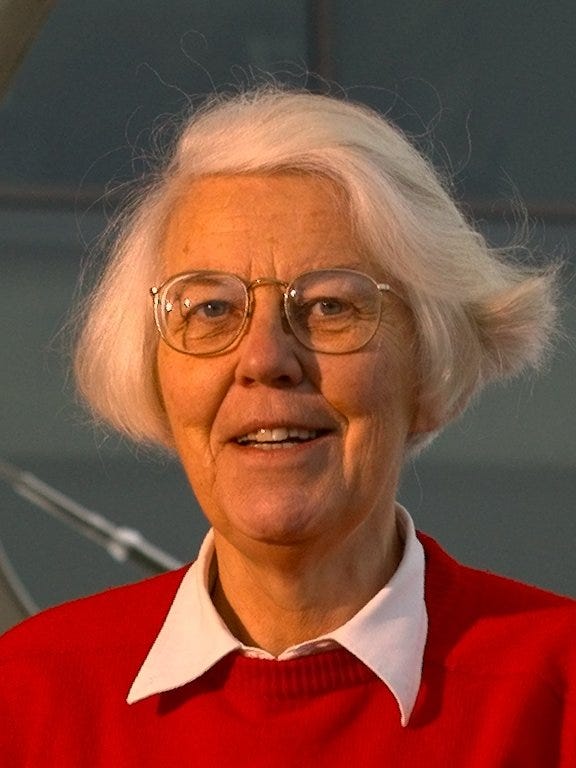
Computing is too important to be left to men.
— Karen Spärck Jones
Karen Spärck Jones believed in these words and proved them. Her work in information retrieval and natural language processing paved the way for search engines. Thanks to her, we can Google our hearts out and find exactly what we're looking for.
Born in 1935, Karen was a self-thought pioneer of computer science and an advocate for women in the field.
Her work includes 9 books and a ton of papers in many areas, including NLP, probability, speech recognition and many more.
Margaret Hamilton
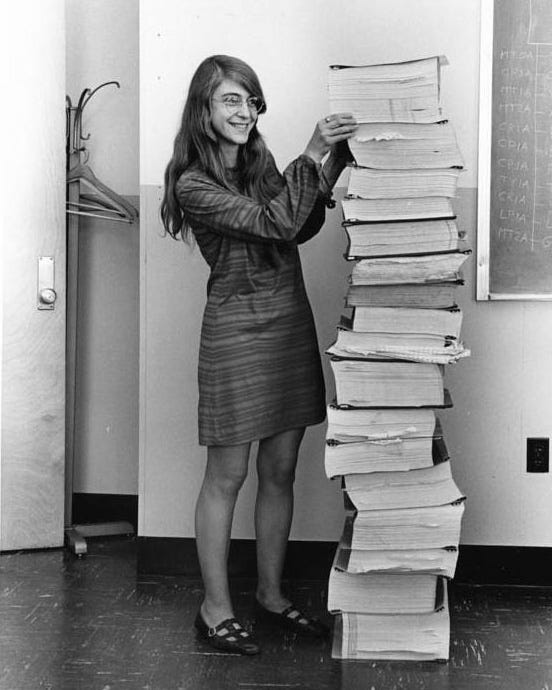
Let me introduce you to the woman who took us to the moon. Literally!
Born in 1936, Margaret led the team that developed the onboard flight software for NASA's Apollo missions. Imagine the pressure of writing code that would be used to land astronauts on the moon for the very first time.
Margaret's work was pioneering, not just in its application but also in its approach to software development. Her insistence on rigorous testing and her development of error detection and recovery techniques were revolutionary. She was the person who coined the term “software engineering”.
Her legacy is not only in the footprints left on the moon or in the photos snapped from its surface. It's in the smartphones in our pockets, the cars we drive, and the way we live our lives every day, surrounded by technology, following in the footsteps of her pioneering work.
And I can’t even write a 100-line dbt model without making typos and butchering column names!
Barbara Liskov
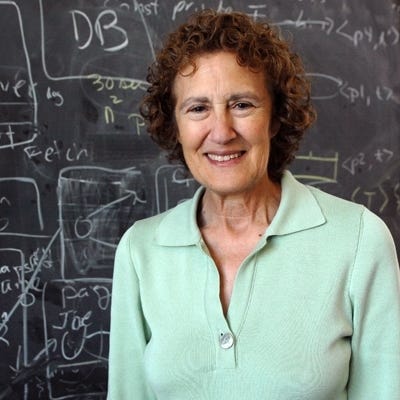
Now, Barbara Liskov is a name you should know. She was born in 1939 and is the brain behind data abstraction and programming languages shaping software engineering. You know, one of the SOLID principles is named after her.
With her work on data abstraction, Liskov has made foundational contributions to software engineering and programming language theory. Thanks to her, CLU is the first high-level language to support distributed program implementation. Since then, programming has never been the same.
Barbara Liskov is a living legend. Her work is the foundation of the tech we use daily.
Lynn Conway
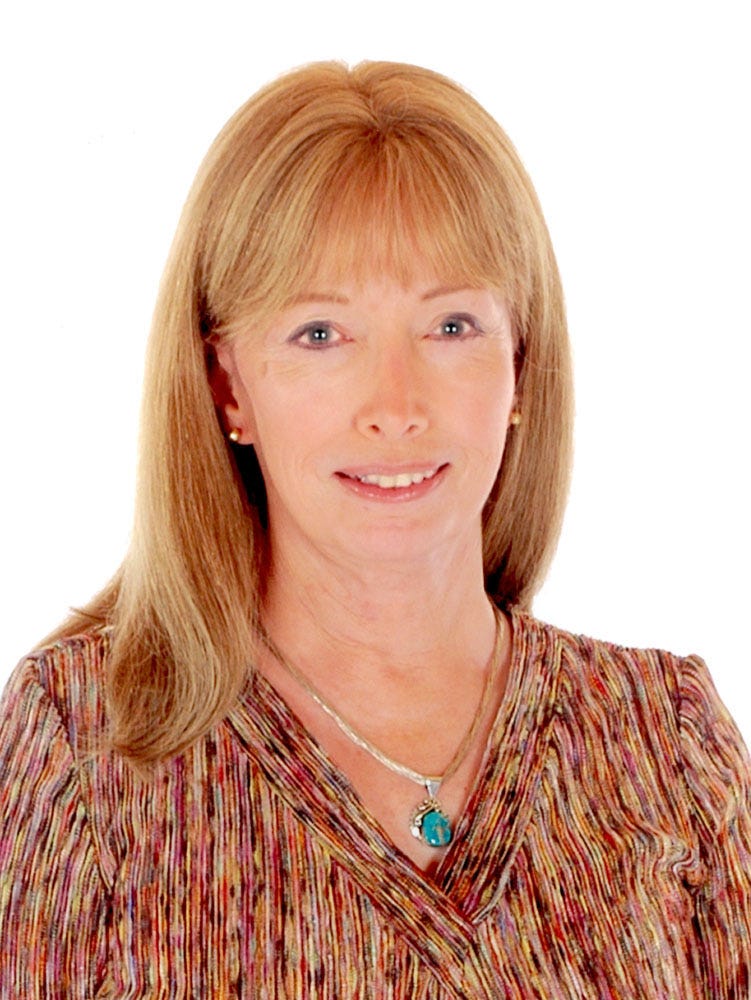
Last but not least, Lynn Conway was born in 1938.
Her work on VLSI systems in the '70s and '80s made complex microprocessors widely accessible. Her innovations catalysed the digital age, impacting technology at a fundamental level.
Facing adversity during her gender transition, Conway rebuilt her career, becoming a respected scientist and a transgender rights advocate, embodying resilience and courage.
Her legacy extends beyond technology, championing diversity and inclusion. Conway's journey and advocacy inspire a more accepting and innovative future in STEM.
Summary
These incredible women, among many others, didn't just make their mark in the tech world. They paved the way for future generations in the tech industry. Despite facing towering walls of challenges, they proved that brilliance and determination.
These women prove bright minds can come up with groundbreaking ideas regardless of education, race, or gender. The future is bright, diverse, inclusive, and bursting with the potential they've unlocked.
So, as we celebrate their carved paths, let's roll up our sleeves and get to work. We must keep their legacy alive, encouraging more women and girls to explore technology.
Now, it's your turn. Please share this article and spread the word about the incredible women who've shaped our digital world. Who knows? You could inspire the next Ada, Grace, or Katherine.
How Did You Find This Post?
Did you enjoy that piece? Follow me on LinkedIn for daily updates.





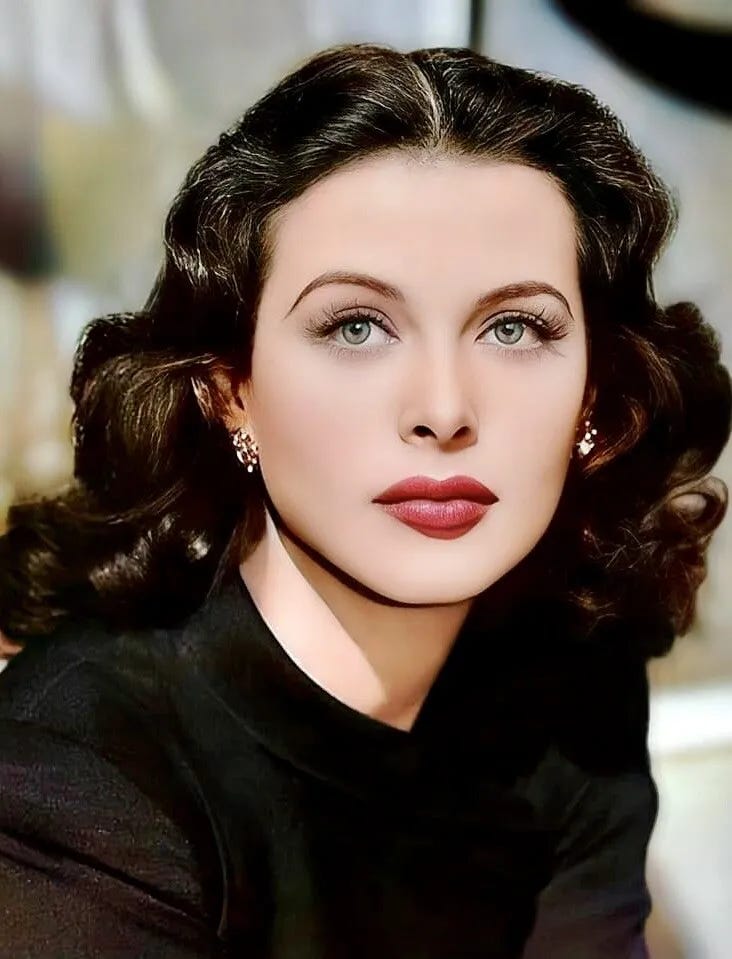


Thanks so much for the shoutout and nice words Yordan!
I believe the picture under Karen Spärck Jones is actually Susan Kare. I've seen this picture in other places with Susan's name. Also, since there is a Mac in the picture, it must be 1984 or later. This would make Karen Spärck Jones about 50 and Susan Kare about 30. The person in this picture looks closer to 30 than 50.